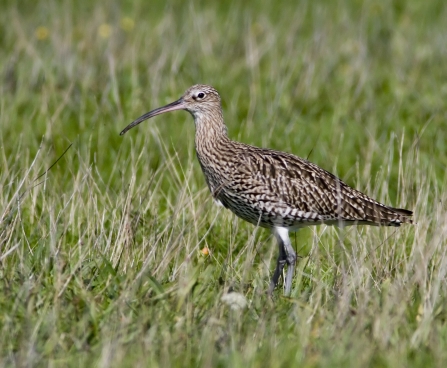“This part of our landscape is really fragile and a fire on this scale will take years to recover from. The unique landscape provides a home for many species including mountain hare, common lizards and field voles as well as ground nesting birds such as curlews, lapwing and wheatear that rely on the shelter provided by the heather and bracken which has now been lost.” said, Dr Jo Smith, Chief Executive of Derbyshire Wildlife Trust.
Burning moorland will take years to recover
Golden plover, Derbyshire uplands, Tim Birch

Curlew, Damien Waters
Wildfires at this time of year are particularly bad because it is peak breeding season.
“The moorlands and wildlife will eventually recover, we don’t know exactly how long it will take but it will certainly be years.”
“After a fire plants will start to recover, but it will be the faster growing species such as purple moor grass which will come back first. This will risk the recovery of the slower, more valuable species such as heather, sphagnum moss and cotton grass which give the moorland its unique characteristics and supports the local wildlife.”
“Our thoughts are with everyone who has been affected by the fire and we cannot thank the fire service, and now the army, enough in their efforts to tackle the blaze.”Derbyshire Wildlife Trust
"Once the heather and other flora has been burnt off the peat is left exposed. This means we risk the peat layer being washed away with rainfall, meaning the stored carbon is released. Once the fire has been extinguished it will be much easier to tell what the extent of the damage to the peat has been and what this will mean for the moorland recovery."
Peat moorlands are iconic landscapes that improve the environment and help combat climate change by storing carbon. Uplands across England lock up over 400,000 tonnes of carbon per year. The peat also helps to slow floodwaters and filters drinking water. Derbyshire Wildlife Trust recently released their vision for a new approach to upland land management and has tackled the subjects of hen harriers, wildlife persecution on the moorlands and sustainable moorland restoration for years.
The cause of the fire is not yet known. The Trust is asking people to be especially vigilant at this time of high fire risk. If anyone sees any concerning activity, smoke or fire on the moors, please report it immediately to the Fire and Rescue Service on 999.
